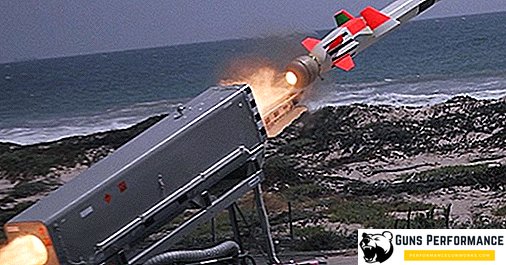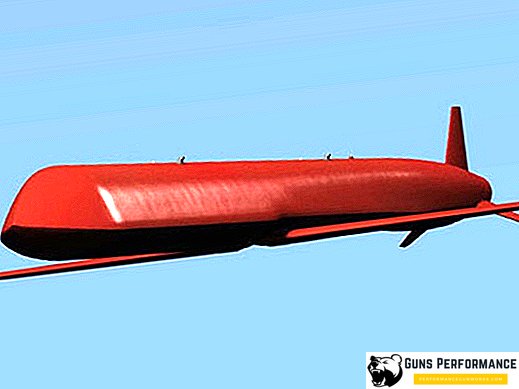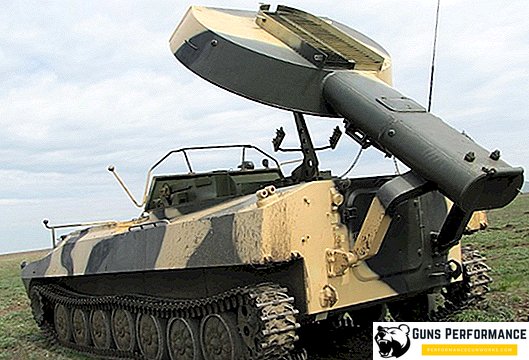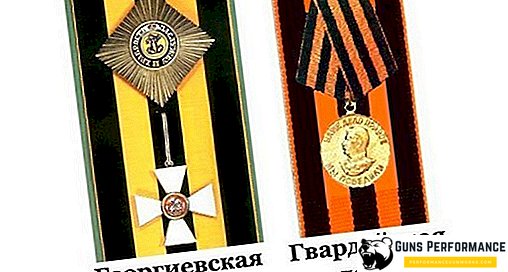Spain is one of the few countries in Europe whose history contains all forms of political organization. In a country where royal power has always dominated, in the last 100 years the Republic has twice emerged. Although these state entities were short-lived, the President of Spain ruled the country for short periods of republican rule. In the state there were democratic institutions of power, the status of the president of Spain and the parliament determined the internal and foreign policy of the state. Today, Spain is considered to be a model of the European model of a constitutional monarchical regime, and forty years ago the country had its dictator, there was a Spanish government in exile, which was headed by four presidents.
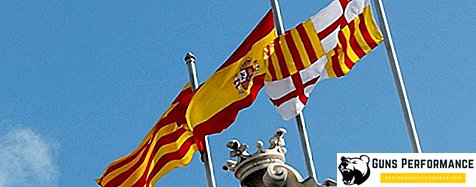
The system of state power in Spain
The current Spain is a constitutional monarchy dating back to 1947. Until 1975, the king of Spain was considered the formal head of state. Real power in the state was in the hands of Francesco Franco, the country's political and administrative leader. Only after the death of the dictator in the country begin democratic reforms, are reforms of the public administration system. Spain receives a new Constitution in 1978, according to which the king becomes the head of state, and all legislative and executive power is in the hands of parliament.

The parliamentary majority determines the political course of the Spanish kingdom. Representative functions are assigned to the King of Spain, while the entire leadership of the country is exercised by the government, headed by the Prime Minister.
There was a short period in Spain, from 1869 to 1874, when the real power in the state was represented by the president, possessing at the same time the powers of the head of state and heading the government.
The first Spanish Republic was the first attempt by national political forces to put an end to absolute royal authority and build a democratic state. This is not to say that these events have become something special in the history of the Spanish state. In the middle of the XIX century, the whole of Europe experienced a revolutionary boom, the consequence of which was the fall in a number of countries of monarchical regimes and the subsequent establishment of a republican form of government. Spain was no exception in this regard, having known for a short period all the charms of the republican system.

First Republic and its leaders
The socio-political situation that led to the formation of the Republic arose in Spain against the background of the revolutionary processes that shook Europe in the middle of the 19th century. This was largely contributed to the protracted internal political crisis associated with the inconstancy of royal power. Leapfrog with the heirs of the royal throne, led to the loss of influence of the royal family. Against the background of an acute political crisis in the royal house, the influence of representatives of the army elite on the political processes is growing. The confrontation of various political groups leads to the beginning of the separatist processes. Madrid begins to lose control over individual regions of the country. In such circumstances, there is a need to strengthen the central government by creating another form of government.

Governments, changing with the speed of animation, could not control the situation in the country. In 1868, the insurgency covered the whole country. In such circumstances, Queen Isabella is forced to leave the country, all power in the state passes into the hands of the Cortes. The next government was formed from among unionists, supporters of a single state, and progressives, who advocated the establishment of a republican form of government in Spain. For a short period, from February 25, 1869 to June 18, 1869, the new government was headed by Francisco Serrano, who assumed the functions of head of state and chairman of the government. The position was called - Minister-President of the Executive. The status of the occupied posts was made by Francisco Serrano, the first president of Spain.

The reforms, with which the new head of state began, primarily affected the media and the education system. In the absence of a real contender for the royal throne, Serrano, in parallel with his public office, becomes regent. Despite the visible real results of the work of the Serrano government, Spain continued to break off anti-government uprisings and insurrections. In the northern provinces, two opposing camps intensified, the carlists - supporters of the old royal dynasty and the Republicans, who advocated the overthrow of the monarchy.
An attempt to restore the current monarchy was undertaken in 1870, when the Spanish royal throne was occupied by King Amadeus, son of the Italian king. Serrano receives from the hands of the king the portfolio of the Minister-President, becomes the head of the war ministry. However, a week later, the newly appointed Minister-President was forced to resign, since the king did not support Serrano’s decision to curtail constitutional changes.
For two years, King Amadeus tried to restore order in the country and deal with anarchy in the system of government and in the administrative structure of the kingdom. However, the wishes of the king constantly ran into opposition from the Cortes, within which there was a fierce political struggle. The result of the unsuccessful struggle of the king for the establishment in Spain, a strong royal power, was the abdication of Amadeus from the throne. In response to this step, the Cortes February 11, 1873 proclaimed the formation of the Spanish Republic. The first President of the Republic was the representative of the Republican Party Estanislao Figueras.

The first president of Spain made a bid to empower the provinces. Power in the Spanish cities in the early days of the Republic passes into the hands of the magistracy. In such conditions the loyalty of regions to the center is formed.
Presidential Government in Spain
The existence of the Spanish Republic was short and intense dramatic events. For a short period, the power in the country was in the hands of four presidents, each of whom managed to hold out for two or three months at his post. During this time, Spain experienced the power of three civil wars: the third carlist war, the armed uprising in the cantons and the military intervention in Cuba, which revolted against the metropolis.

During the period from February 11, 1873 to December 29, 1874, the following persons held the post of President of Spain:
- Estanislao Figueras served as Minister-President from February 12, 1873 to June 11, 1873;
- Francisco Pi-i-Margale stayed in the position of President of the Executive Power for just over a month, from June 11 to July 18, 1873;
- Nicholas Salmeron Alonso led the Republic on July 18, 1873 and remained in office until September 7, 1873;
- Emilio Castelar was President of the Republic for four months, from September 7, 1873 to January 4, 1874.
Virtually all the presidents of the First Republic were representatives of the Republican Federalist Party, but this did not affect the unity of political forces and led to the fall of the republic.

The military coup organized by General Manuel Pavia put an end to the short existence of the Spanish Republic. Francisco Serrano came to power again, having liquidated all political acquisitions of the times of republican rule and announced the restoration of the monarchy in the country. Alfonso XII was to become the new king of Spain.
Despite the disappearance of the Republic, the post of minister-president has been preserved. For a short period, he was occupied again by Francisco Serrano, however, his stay at the head of the country was short. After refusing to hold a high government position under King Alfons Serrano resigned. He was replaced by Juan de Zavala and de la Puente, appointed by the Cortes to the presidency of the executive branch on February 26, 1874. The next head of the executive branch of government was in office 189 days, after which Prakseses Mateo Sagasta replaced him on September 3, 1874.

The government, led by Praxes Mateo Sagasta, was the last in the history of the post of minister-president. The inauguration of Alfonso XII, held on December 29, 1874, ended the turbulent period of Spanish history. Republican and federalist political forces left the political scene of the country, and the post of president of the executive branch disappeared.
Spain returned to the bosom of European monarchies. An attempt to establish a republican form of government and move to a democratic path of development was delayed for more than half a century.
The situation in Spain on the eve of the Second Spanish Republic
The royal power in Spain placidly existed until the beginning of the 20s of the XX century. After the First World War, in which Spain miraculously managed to maintain neutrality, political parties and movements became more active in the country. A number of cities and cantons were covered by civil unrest. King Alfonso XIII did not have the political will to resolve an acute internal political crisis. Real power in the country could only hold the military. During this period, General Primo de Rivera was promoted to the first roles in the kingdom, who was able not only to suppress the hotbeds of revolutionary resistance, but also to consolidate the position of the central government in the regions.

By giving Primo de Rivera carte blanche to quell civil unrest, the Spanish monarchy itself dug a hole. Taking advantage of the difficult political situation, the general arranged a coup d'état on September 13, 1923, putting King Alfonso in the face of the need for changes in the system of government. The result of political bargaining was the granting of wide powers to Primo de Rivere. In Spain, the Constitution was suspended, the government was dismissed, and the Spanish Cortes were dissolved. All the tools of state power passed into the hands of the "military directory", which was headed by General Primo de Rivero.
During the years of the military directory, close military-political contacts of Spain with Mussolini’s fascist Italy were established. In 1926, the countries signed an agreement on friendship and mutual assistance.

In other words, a military dictatorship has been established in the country. Despite a fairly tough domestic policy, the military was able to quickly stabilize the situation in the country. Having dealt with political vacillation and dispersed the movements of the communists, socialists and anarchists, Primo de Rivera moves to a civilian form of government. Instead of the "military directory" there is a civil directory, which manages the country on the principles of unity of command. Trying to impart democratic features to the established political regime, the military junta went on to create a new Constitution. The goals and objectives that were set by Primo de Rivera and his colleagues were directed mainly at solving economic problems, whereas a vacuum was formed in the political life of the country.
The Communists in tandem with the socialists and the Phalangists, taking advantage of the favorable situation, again strengthened and moved to more active actions. The regime of General Primo de Rivera, under pressure from public discontent, was forced in January 1930 to leave the political scene. The government for a short period was headed by General Berenguer.
Second Spanish Republic and its Presidents
The situation in which Spain was in the period between the authorities heated up every day. In the winter of 1931, the economic situation of the country worsened, which was the reason for the beginning of mass civil discontent. The next municipal elections, which took place on April 12, 1931 in the regions of the country, became the detonator of the revolution. Republicans, dissatisfied with the election results, brought their supporters to the streets of Spanish cities, putting the regime in a stalemate. In the absence of real power and strength, King Alfonso XIII was forced to leave the country, which was led by the Provisional Government, which existed until December 1931.

In a situation of political bacchanalia in June 1931, parliamentary elections were held, the Republicans becoming the winners. Only socialists were able to obtain 110 mandates out of 470 possible in the Constituent Assembly. Having received a majority in parliament, the Republicans created a constitutional commission, which introduced the new Constitution of the country in six months. From now on, Spain became a Republic in which all power belongs to representatives of all classes and is built on the principles of equality, justice and freedom.
The first president of the Second Republic is Alcala Zamora and Torres, Niceto, who served as Prime Minister of the Provisional Government. The inauguration of the new head of state took place on December 10, 1931. From the first days of his tenure as Alcala Zamora and Torres, Niceto was in opposition to the current government, which led to the extension of crisis phenomena in the country's political structure. Decrees of the president were at odds with the decision of the government, and the goals and tasks that were set by the socialists before the government constantly ran into opposition from the head of state.

In 1933, Alkara Zamora dissolves the Constituent Assembly. In the subsequent early parliamentary elections, right-wing forces won. Without a clear and consistent political line, the first president of the Second Republic failed to achieve a balance of political forces in the country. The next dissolution of the parliament in November 1935 showed the entire weakness of the current regime. The main goal of the upcoming elections was the victory of a coalition of right-wing forces and the Phalangists over the socialists, headed by the Popular Front. The created centrist government was engaged in the preparation of new elections, which were to be held in February 1936.
Republicans, led by former Prime Minister Asania, went into political union with the socialist radicals, creating the Left Republican Party, which has become the main driving force of the liberal movement since that moment. However, the Republicans could only incline the political pendulum to their side in alliance with the socialists. As a result of lengthy political bargaining, the Popular Front was formed - a bloc of left-wing Republicans and socialists. In such a weight category, the political allies managed to beat their opponents with a small margin by winning the 1936 parliamentary elections.

The current president Alkara Zamora and the government were quick to declare the elections invalid, but the active citizenship of the population of the large cities of Spain stopped the current government from this step.
The elections of 1936 brought to power the government of Asanya, which immediately set about to lead the country out of the political crisis. A political amnesty was declared in the country, many spheres of life in Spanish civil society were given a new direction in their development. The current president, Alkara Samoa, resigns on April 3. For a short period, Diego Martinez Barrio, who holds the presidency until May 7, 1936, becomes head of state. At the ceremonial meeting of the Spanish parliament, held on May 10, Asana is elected as the new president of Spain. Government leadership is entrusted to the liberal Santiago Casares Quiroga.

Despite the obvious political breakthrough in the system of government and significant economic changes, the power of the Popular Front begins to rapidly lose popularity among the people.
Dissatisfaction with the results of land reform translates into peasant revolts. Against this background, the food crisis is intensifying, which is particularly acute in the major cities of the country. In such an environment, radical elements quickly came to the fore, who through their actions fueled public discontent.
Civil War of 1936-1939
In the period of the next social and social crisis that covered the country after the revolution, the army elite entered the political arena. In opposition to the representatives of the Popular Front, there was a military-nationalist group headed by General Francisco Franco. Политические противоречия между двумя крайне противоположными политическими лагерями переросли в гражданское вооруженное столкновение. Мятеж, поднятый 17 июля верными Франко испанскими воинскими частями, дал старт гражданской войне, полыхавшей на всей территории Испании четыре года.

Получив техническую и вооруженную поддержку со стороны Италии и фашисткой Германии, Франко сумел добиться решающего перевеса над вооруженными силами Испанской Республики. Действующий президент страны Асанья ввиду приближения франкистов к столице и при отсутствии возможностей достичь политического компромисса с противниками, покидает страну. После того, как 28 марта войска Франко вступили в Мадрид, период Второй Испанской Республики окончился. Будучи за границей, Асанья 27 февраля заявляет о своей отставке, которая только способствовала легитимизации политического режима Франко.
С победой Франко, Испания почти на двадцать шесть лет, до 1975 года становится личной вотчиной одного человека. В 1947 году Испания снова объявлена королевством, однако король будет считаться только формальным главой государства. Франсиско Франко становится единоличным правителем с неограниченными диктаторскими полномочиями.


